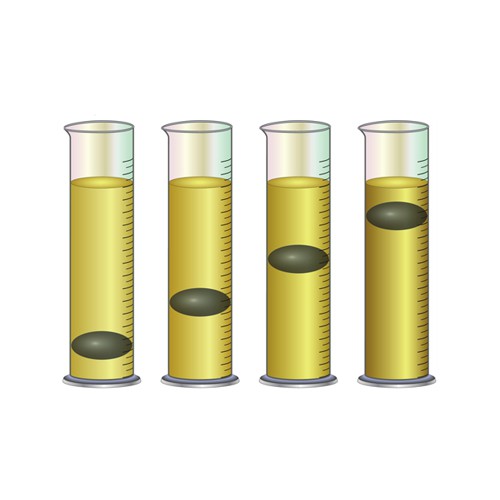Motor oil grades indicate the oil’s viscosity. Classifications include single-grade oils and multi-grade oils, such as 10W-40.
Understanding motor oil grades and classifications is crucial for ensuring your vehicle’s engine runs smoothly and efficiently. Motor oil, often described as the lifeblood of an engine, requires precise selection to match the manufacturer’s specifications and ambient temperature conditions. The grading system, established by the Society of Automotive Engineers (SAE), measures oil viscosity – its resistance to flow.
Single-grade oils are designed for specific temperature ranges, making them suitable for certain climates or seasons. Multi-grade oils, however, offer a wider range of protection, functioning effectively across various temperatures thanks to viscosity modifiers. Choosing the right oil grade maximizes engine performance, prolongs its life, and can lead to better fuel economy, ensuring your vehicle is well-cared for in any driving conditions.
Introduction To Motor Oil
An introduction to motor oil unlocks the secrets of what keeps engines running smoothly. This vital fluid does more than just lubricate; it serves as the lifeblood of automotive performance. Grasping its importance and understanding its classifications ensures that engines operate at their peak. Let’s delve into the pivotal role of motor oil and uncover the significance of selecting the right grade for your vehicle.
Role Of Motor Oil in Engines
Imagine a bustling city. Now picture motor oil as the traffic controller of an engine. It manages heat and reduces friction, maximising engine efficiency. Here’s how it helps:
- Lubricates engine parts to prevent wear and tear.
- Helps cool engine components by transferring heat away.
- Protects against corrosion, keeping engine parts clean.
- Improves sealing, which maintains engine pressure.
Importance Of Correct Oil Grade
Choosing the correct motor oil grade is not just important; it’s critical for engine health. The right oil:
- Matches engine design, complementing its specific needs.
- Ensures optimal performance, regardless of weather conditions.
- Prevents premature wear, extending engine life.
- Aids in fuel efficiency, saving money over time.
Think of motor oil grades as shoe sizes; the right fit is paramount. Using the wrong oil can lead to reduced lubrication and potential engine damage. Always check the vehicle’s manual for the manufacturer’s recommendation.
The Basics of Motor Oil Viscosity
Motor oil viscosity might sound complex, but it’s simply a measure of oil’s resistance to flow. Like the thickness of honey versus water. In cars, the right viscosity keeps engines running smoothly. Let’s dive into what this really means for your vehicle.
Defining Viscosity
Viscosity is key to engine performance and protection. It determines how well the oil pours at different temperatures. Thick oils have high viscosity, and thin oils have low viscosity.
How Temperature Affects Viscosity
Temperature changes the way motor oil behaves. Warm oil flows faster; cold oil flows slower.
- High temperatures make oil thin out.
- Low temperatures cause oil to thicken.
Choosing the right oil for your climate is crucial. It ensures your engine starts easily and is protected in all weathers.
Understanding Oil Labels
Oil containers have codes like “5W-30” or “10W-40”. These tell you the viscosity of the oil in cold and hot temperatures.
| Label Part | Meaning |
|---|---|
| 5W | Viscosity when cold (Winter) |
| 30 | Viscosity when hot |
Choose oil with the right “W” number for winter temperatures. The second number is for your engine’s normal running temperature.
Understanding Oil Grade Nomenclature
Choosing the right motor oil for your vehicle is crucial. Oil grades look like a code on your oil container. This code tells you the oil’s viscosity. Viscosity means how thick the oil is and how it flows at different temperatures. Understanding this code helps keep your engine running smoothly.
Reading the Numbers and LettersReading The Numbers and Letters
The numbers and letters on oil containers are not random. They are a guide to the oil’s performance. Let’s break them down:
- The first number stands for the oil flow at cold temperatures.
- The letter ‘W’ means winter, not weight as some think.
- The second number shows the oil flow at engine operating temperatures.
For example, 10W-30 oil has a viscosity of 10 in the cold and 30 at normal engine heat.
Single vs. Multi-grade OilsSingle Vs. Multi-grade Oils
Motor oils can be single or multi-grade. What does that mean?
| Single-Grade | Multi-Grade |
|---|---|
| Works well at one temperature. | Adapts to a range of temperatures. |
| Has one number, like SAE 30. | Has two numbers, like 10W-30. |
Multi-grade oils are more versatile. They flow well in cold and keep their thickness when it is hot.
Coming Soon, the Contents Below:
- Best SAE 30 Motor Oil (Research Complete, Click Here)
- Best SAE 30 Oil for Small Engines (Research Complete, Click Here)
- Best SAE 30 Oil for Lawn Mower
- Best SAE 30 Oil for Generator
- Types of SAE 30 Oil
- What is SAE 30 Oil? What’s It Used for?
Also Coming Soon, the Contents Below:
- Best 10W-30 Synthetic Motor Oil (Research Complete, Click Here)
- Best 10W-30 Oil for Small Engines (Research Complete, Click Here)
- Best 10W-30 Oil for lawn Mowers
- Best 10W-30 Oil for Generators
Sae Classification System
The SAE Classification System is vital in understanding motor oil and its performance. This system sets the standards for motor oils based on their viscosity, which is crucial for engine protection and efficiency. Knowing the SAE grade helps ensure that you choose the right oil for your vehicle’s engine.
Origins Of the Sae Standards
The Society of Automotive Engineers (SAE) created the classification system. Its purpose is to ensure that all motor oils meet specific requirements for viscosity. These standards began in the early 1900s and continue to evolve with automotive technology.
Deciphering Sae Oil Grades
SAE grades relate to oil thickness. This thickness changes with temperature. For example, a label with ‘5W-30’ has two important pieces of information:
- 5W: The ‘W’ stands for winter, not weight. It tells the oil’s flow at cold temperatures.
- 30: This number indicates how the oil flows at 100 degrees Celsius, representing engine operating temperatures.
Here’s a simple explanation of common SAE grades:
| Grade | Cold-Weather Performance | Hot-Weather Performance |
|---|---|---|
| 0W-20 | Excellent at low temperatures | Stable at high temperatures |
| 5W-30 | Great at low temperatures | Good at high temperatures |
| 10W-40 | Good at low temperatures | Good at high temperatures |
Selecting an SAE grade that matches your vehicle’s manual is key. Always follow these guidelines to keep your engine happy.
Api Service Categories
Understanding the letters and numbers on motor oil containers is crucial for vehicle maintenance. They tell us about the oil’s performance level, viscosity, and the engine type it’s suited for. The API Service Categories are sets of specifications created by the American Petroleum Institute (API) to classify oils by their performance. API categories ensure that the oil meets certain standards and is safe for specific engines.
Api Ratings for Gasoline Engines
Gasoline engines require oils that keep them clean and protect them at high temperatures. The API ratings for gasoline engines have “S” prefixes, which stand for “Service.” Modern ratings typically start with “SN” and go all the way back to “SA.” Each letter upgrade signifies improvements in oil properties such as energy conservation, high-temperature deposit protection, and wear protection. Engines made after 2000 generally require oils rated “SJ” or newer. It is critical to check the vehicle’s manual for the manufacturer’s recommended API grade.
Api Ratings for Diesel Engines
For diesel engines, the oil must endure extreme pressure and combat soot contamination. Diesel oil ratings have a “C” prefix, which means “commercial.” Current standards include “CK,” “CJ,” and “CI,” with “CK-4” being the latest and providing the best performance. It can handle high temperatures, reduce emissions, and extend engine life. Operators should ensure that they choose an oil with an API rating that matches their engine’s specifications for optimal performance and longevity.

Credit: www.exol-lubricants.com
Ilsac Standards and Certification
The lifeblood of your vehicle’s engine is its motor oil, a pivotal component that demands keen attention to its grades and classifications. Among the various standards that govern motor oil quality, ILSAC (International Lubricant Standardization and Approval Committee) Standards stand out significantly. They play a crucial role in ensuring that the motor oil you pour into your engine meets the strict performance and efficiency criteria suited for modern engines. Let’s dive into understanding the Goals of ILSAC and what it means to have an ILSAC Certification.
Goals Of Ilsac
ILSAC’s primary mission revolves around three pivotal aspects:
- Conservation: Fuel efficiency is a top priority, aiming to reduce oil consumption and carbon emissions.
- Protection: It ensures that motor oils protect against wear, extending engine life.
- Compatibility: Motor oils must be compatible with engine components and emission systems.
What Ilsac Certification Means
An oil with ILSAC Certification has passed rigorous testing and meets stringent quality benchmarks.
| ILSAC Certification | Meaning for Your Vehicle |
|---|---|
| Performance: | Ensures high-performance levels and engine cleanliness. |
| Efficiency: | Contributes to improved fuel efficiency and reduced oil waste. |
| Emissions: | Supports lower emissions, aiding in environmental protection. |
When selecting motor oil, the ILSAC starburst symbol on the container signifies compliance with current ILSAC standards. This certification guarantees that your engine runs smoothly, cleanly, and efficiently.
European Oil Standards
Understanding motor oil grades isn’t just about numbers and letters. It’s crucial for your car’s health. European cars have their own set of oil standards. These standards ensure that oil meets certain specifications. Let’s look at these European Oil Standards closer.
Acea Classification
Europe uses the ACEA classification to define oil performance. ACEA stands for the Association des Constructeurs Européens d’Automobiles. It’s a group of European car makers.
ACEA classifications are split into categories:
- A/B: For passenger cars with petrol and diesel engines.
- C: For catalyst compatible oils.
- E: For heavy-duty diesel engines.
Each category has several grades, like A1/B1 or C3. These grades tell you about:
| Grade | Fuel Efficiency | Engine Protection | Oil Durability |
|---|---|---|---|
| A1/B1 | High | Basic | Standard |
| C3 | Standard | Enhanced | Long-lasting |
Oem Specific Standards
Car makers sometimes set oil standards beyond ACEA. These are OEM specific standards.
OEM stands for Original Equipment Manufacturer. Examples include:
- Volkswagen uses standards like VW 502 00.
- Mercedes-Benz uses MB Approval 229.5.
- BMW has Longlife-01.
These standards address unique engine designs. They ensure the oil works perfectly with your car’s engine. Always use the oil that meets your car’s OEM standards. It keeps your engine running smoothly.

Credit: www.energy.gov
Selecting The Right Motor Oil
Discovering the optimal motor oil for your vehicle is like a puzzle. Do you know that using the improper grade could harm your engine? To achieve peak performance and ensure longevity, selecting the right oil is crucial. Let’s dive into how you can match the oil to your engine’s type, consider the climate and driving habits, and interpret your vehicle’s owner’s manual for the best choice.
Matching Oil to Engine Type
Engines are diverse, and the motor oil that works wonders for one may spell trouble for another. Whether you have a high-performance sportscar or a heavy-duty truck, the engine type dictates the oil you need. Use the list below to align your oil selection with your engine’s requirements:
- Turbocharged and high-performance engines often require full-synthetic oil.
- Older, high-mileage engines benefit from synthetic blends or high-mileage oil.
- General-use vehicles typically work well with conventional oil.
Considerations For Climate and Driving Conditions
Weather extremes affect how oil performs. The wrong oil can turn too thin or too thick in severe temperatures, impacting engine protection. Assess your driving conditions using the guide below:
| Climate | Motor Oil Recommendation |
|---|---|
| Hot, Dry | Thicker oil, such as 10W-40 |
| Cold, Icy | Thinner oil, like 5W-20 or 5W-30 |
Reading Vehicle Owner’s Manuals
The instruction book that came with your car, the owner’s manual, is your best friend. It eliminates the guesswork. Inside, you’ll find the manufacturer’s oil recommendations tailored to your specific model. Note the recommended oil viscosity, oil type, and service intervals. Here’s a quick checklist:
- Locate the motor oil section in your manual.
- Identify the recommended oil viscosity.
- Determine whether synthetic, synthetic blend, or conventional oil is advised.
- Note the preferred service timeline.
The Impact of Wrong Oil Grade Usage
Using the right motor oil grade is like feeding your car the best food. Get it wrong, and trouble follows. Here’s how the wrong oil grade can hurt your engine.
Engine Wear and Tear
Engines are complex. Every part needs smooth movement. Wrong oil grades can cause friction. This friction wears parts faster. Imagine your engine’s parts grinding. Not good, right?
Over time, extra wear means more repairs. That’s money out of your pocket. A sludgy engine dying early could be the sad result. That’s why choosing the correct oil is critical.
Read More: Engine Oil Viscosity Grades And Engine Oil Viscosity Chart
Fuel Efficiency and Performance
Think of your engine as an athlete. The right oil is like a balanced diet for peak performance. Wrong oil equals poor performance. Your engine struggles. It gulps more fuel. That’s more trips to the pump.
- Your gas mileage drops.
- Engine doesn’t deliver full power.
Correct oil helps your engine run efficiently. It’s like getting an easy win. Your car feels peppier, and your wallet stays fatter.
Synthetic Vs. Conventional Oils
Choosing the right motor oil can be confusing. Synthetic and conventional oils are the two main options car owners consider. Each has its benefits that suit different driving conditions and engine types. This section explains the key differences and helps drivers make informed choices.
Differences In Performance
Synthetic oil outperforms conventional oil in several areas:
- Temperature resistance – Synthetics handle extreme temps better.
- Engine cleanliness – Synthetics reduce sludge and buildup.
- Longevity – Synthetics last longer, requiring fewer changes.
- Fuel efficiency – Synthetics can offer better fuel economy.
Conventional oil, derived from crude oil, is less refined. It’s best for simple engine designs and lighter-duty use.
Understanding Blended Oils
Blended oils combine synthetic and conventional oils. They offer a middle ground:
| Characteristic | Benefit |
|---|---|
| Better performance than conventional | Improved engine protection |
| More affordable than full synthetic | Cost-effective for regular drivers |
| Enhanced stability | Reduces breakdown in harsh conditions. |
Blended oils are perfect for drivers seeking enhanced performance without the full cost of synthetics.
Advancements In Motor Oil Technology
As the heart of your vehicle, the engine deserves premium care. Motor oils have evolved. They now offer better protection. They extend the engine’s life. High-tech engines need advanced oils. Let’s dive into these innovations.
Innovations in Synthetic OilsInnovations In Synthetic Oils
Synthetic oils have transformed engine performance. They reduce wear. They can withstand extreme temperatures. Their molecular structure is engineered. It ensures optimal lubrication.
These oils keep engines clean. They fight sludge and deposits. Synthetic oils flow better in cold weather. They protect better in hot weather.
Table showing benefits of synthetic oils.| Feature | Benefit |
|---|---|
| Better flow at low temperatures | Easy starting and instant protection |
| Resistant to oxidation and thermal breakdown | Longer oil life and engine protection |
| Uniform molecular size | Reduced friction and wear |
Future Trends in Engine Lubrication
The future of motor oil is bright. Eco-friendly options are on the rise.
We will see oils that save fuel. They will last longer. They will reduce emissions. Nanotechnology will play a role. It will create super-lubricants.
- Biodegradable motor oils
- Long-life oils with extended intervals
- Nanoparticle additives for reduced friction (Read More: Are Oil Additives Safe for Your Engine?)
The engine lubrication game is changing. Stay tuned for amazing breakthroughs.

Credit: m.youtube.com
Frequently Asked Questions of Motor Oil Grades and Classifications Explained
What Do the Different Grades of Engine Oil Mean?
Different grades of engine oil indicate their viscosity, which affects performance at various temperatures. The first number represents cold-weather viscosity, the “W” stands for winter, and the second number indicates high-temperature viscosity. Higher grades ensure better lubrication in specific climates.
How Do You Classify Engine Oil?
Engine oil is classified based on viscosity and service rating. Viscosity grades dictate oil flow at specific temperatures, while service ratings indicate oil quality and engine protection levels set by API or ACEA standards.
What Do the Letters Mean for Engine Oil?
The letters on engine oil represent its viscosity grade, which indicates the fluid’s thickness and temperature performance as certified by the SAE (Society of Automotive Engineers).
Is 5w30 Thicker Than 10w30?
No, 5W30 is not thicker than 10W30. The “5w” indicates a lower viscosity in colder temperatures, making 5w30 thinner than 10w30 at engine start-up temperatures.
Conclusion
Understanding motor oil grades and classifications is crucial for optimal vehicle performance. Selecting the right lubricant ensures engine protection and efficiency, which are essential for longevity. Remember, choose quality oils that meet your car’s specific requirements. Keep engines running smoothly; let informed choices drive your motor oil selection.
Stay knowledgeable, drive confidently.


